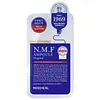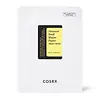What's inside
What's inside
 Key Ingredients
Key Ingredients

 Benefits
Benefits

 Concerns
Concerns

 Ingredients Side-by-side
Ingredients Side-by-side

Water
Skin ConditioningGlycerin
HumectantDipropylene Glycol
HumectantGlycereth-26
HumectantNiacinamide
Smoothing1,2-Hexanediol
Skin ConditioningHydroxyethyl Urea
HumectantCarbomer
Emulsion StabilisingTromethamine
BufferingBetaine
HumectantTrehalose
HumectantPanthenol
Skin ConditioningAllantoin
Skin ConditioningXanthan Gum
EmulsifyingPolyglyceryl-10 Laurate
Skin ConditioningAdenosine
Skin ConditioningPolyglyceryl-4 Laurate
EmulsifyingZeolite
AbsorbentSodium Hyaluronate
HumectantAspartic Acid
MaskingTocopherol
AntioxidantAnastatica Hierochuntica Extract
AstringentSodium Polyacrylate
AbsorbentSodium Chloride
MaskingGlycine
BufferingGlutamic Acid
HumectantSerine
MaskingAlanine
MaskingDisodium EDTA
Ceramide NP
Skin ConditioningSqualane
EmollientAcrylates/C10-30 Alkyl Acrylate Crosspolymer
Emulsion StabilisingArginine
MaskingThreonine
Proline
Skin ConditioningHistidine
HumectantMagnesium Chloride
Calcium Chloride
AstringentDimethylsilanol Hyaluronate
HumectantSodium Acetylated Hyaluronate
HumectantSodium Hyaluronate Crosspolymer
HumectantHydroxypropyltrimonium Hyaluronate
Hydrolyzed Glycosaminoglycans
HumectantHydrolyzed Sodium Hyaluronate
Skin ConditioningHydrolyzed Hyaluronic Acid
HumectantHyaluronic Acid
HumectantParfum
MaskingWater, Glycerin, Dipropylene Glycol, Glycereth-26, Niacinamide, 1,2-Hexanediol, Hydroxyethyl Urea, Carbomer, Tromethamine, Betaine, Trehalose, Panthenol, Allantoin, Xanthan Gum, Polyglyceryl-10 Laurate, Adenosine, Polyglyceryl-4 Laurate, Zeolite, Sodium Hyaluronate, Aspartic Acid, Tocopherol, Anastatica Hierochuntica Extract, Sodium Polyacrylate, Sodium Chloride, Glycine, Glutamic Acid, Serine, Alanine, Disodium EDTA, Ceramide NP, Squalane, Acrylates/C10-30 Alkyl Acrylate Crosspolymer, Arginine, Threonine, Proline, Histidine, Magnesium Chloride, Calcium Chloride, Dimethylsilanol Hyaluronate, Sodium Acetylated Hyaluronate, Sodium Hyaluronate Crosspolymer, Hydroxypropyltrimonium Hyaluronate, Hydrolyzed Glycosaminoglycans, Hydrolyzed Sodium Hyaluronate, Hydrolyzed Hyaluronic Acid, Hyaluronic Acid, Parfum
Water
Skin ConditioningButylene Glycol
HumectantGlycerin
HumectantSnail Secretion Filtrate
Skin Conditioning1,2-Hexanediol
Skin ConditioningPanthenol
Skin ConditioningHydroxyacetophenone
AntioxidantHexylene Glycol
EmulsifyingXanthan Gum
EmulsifyingDipropylene Glycol
HumectantSodium Polyacrylate
AbsorbentAllantoin
Skin ConditioningHydroxyethylcellulose
Emulsion StabilisingSodium Hyaluronate
HumectantDisodium EDTA
Dipotassium Glycyrrhizate
HumectantMelaleuca Alternifolia Leaf Oil
AntioxidantPolyglyceryl-10 Laurate
Skin ConditioningPolyglyceryl-10 Myristate
Skin ConditioningWater, Butylene Glycol, Glycerin, Snail Secretion Filtrate, 1,2-Hexanediol, Panthenol, Hydroxyacetophenone, Hexylene Glycol, Xanthan Gum, Dipropylene Glycol, Sodium Polyacrylate, Allantoin, Hydroxyethylcellulose, Sodium Hyaluronate, Disodium EDTA, Dipotassium Glycyrrhizate, Melaleuca Alternifolia Leaf Oil, Polyglyceryl-10 Laurate, Polyglyceryl-10 Myristate
 Reviews
Reviews

Ingredients Explained
These ingredients are found in both products.
Ingredients higher up in an ingredient list are typically present in a larger amount.
1,2-Hexanediol is a synthetic liquid and another multi-functional powerhouse.
It is a:
- Humectant, drawing moisture into the skin
- Emollient, helping to soften skin
- Solvent, dispersing and stabilizing formulas
- Preservative booster, enhancing the antimicrobial activity of other preservatives
Allantoin is a soothing ingredient known for its protective and moisturizingg properties. Because of this, it is often added to products with strong active ingredients.
Studies show higher concentrations of this ingredient can promote wound healing.
Though it can be derived from the comfrey plant, allantoin is produced synthetically for cosmetic products to ensure purity.
Learn more about AllantoinDipropylene Glycol is a synthetically created humectant, stabilizer, and solvent.
This ingredient helps:
Dipropylene glycol is technically an alcohol, but it belongs to the glycol family (often considered part of the ‘good’ alcohols). This means it is hydrating and gentle on skin unlike drying solvent alcohols like denatured alcohol.
As a masking agent, Dipropylene Glycol can be used to cover the smell of other ingredients. However, it does not have a scent.
Studies show Dipropylene Glycol is considered safe to use in skincare.
Learn more about Dipropylene GlycolDisodium EDTA plays a role in making products more stable by aiding other preservatives.
It is a chelating agent, meaning it neutralizes metal ions that may be found in a product.
Disodium EDTA is a salt of edetic acid and is found to be safe in cosmetic ingredients.
Learn more about Disodium EDTAGlycerin is already naturally found in your skin. It helps moisturize and protect your skin.
A study from 2016 found glycerin to be more effective as a humectant than AHAs and hyaluronic acid.
As a humectant, it helps the skin stay hydrated by pulling moisture to your skin. The low molecular weight of glycerin allows it to pull moisture into the deeper layers of your skin.
Hydrated skin improves your skin barrier; Your skin barrier helps protect against irritants and bacteria.
Glycerin has also been found to have antimicrobial and antiviral properties. Due to these properties, glycerin is often used in wound and burn treatments.
In cosmetics, glycerin is usually derived from plants such as soybean or palm. However, it can also be sourced from animals, such as tallow or animal fat.
This ingredient is organic, colorless, odorless, and non-toxic.
Glycerin is the name for this ingredient in American English. British English uses Glycerol/Glycerine.
Learn more about GlycerinPanthenol is a common ingredient that helps hydrate and soothe the skin. It is found naturally in our skin and hair.
There are two forms of panthenol: D and L.
D-panthenol is also known as dexpanthenol. Most cosmetics use dexpanthenol or a mixture of D and L-panthenol.
Panthenol is famous due to its ability to go deeper into the skin's layers. Using this ingredient has numerous pros (and no cons):
Like hyaluronic acid, panthenol is a humectant. Humectants are able to bind and hold large amounts of water to keep skin hydrated.
This ingredient works well for wound healing. It works by increasing tissue in the wound and helps close open wounds.
Once oxidized, panthenol converts to pantothenic acid. Panthothenic acid is found in all living cells.
This ingredient is also referred to as pro-vitamin B5.
Learn more about PanthenolPolyglyceryl-10 Laurate is an ester of lauric acid and Polyglycerin-10.
Polyglyceryl-10 Laurate is a cleansing agent and emulsifier. It helps gather dirt, oil, and other pollutants to be rinsed away. As an emulsifier, it helps prevent ingredients from separating, such as oil and water.
Polyglyceryl-10 Laurate may not be fungal acne safe.
Learn more about Polyglyceryl-10 LaurateSodium Hyaluronate is hyaluronic acid's salt form. It is commonly derived from the sodium salt of hyaluronic acid.
Like hyaluronic acid, it is great at holding water and acts as a humectant. This makes it a great skin hydrating ingredient.
Sodium Hyaluronate is naturally occurring in our bodies and is mostly found in eye fluid and joints.
These are some other common types of Hyaluronic Acid:
Learn more about Sodium HyaluronateSodium Polyacrylate is the sodium salt of polyacrylic acid. It is used as an absorber, emollient, and stabilizer.
This ingredient is a super-absorbent polymer - meaning it can absorb 100 to 1000 times its mass in water. As an emollient, Sodium Polyacrylate helps soften and soothe skin. Emollients work by creating a barrier to trap moisture in. This helps keep your skin hydrated.
Water. It's the most common cosmetic ingredient of all. You'll usually see it at the top of ingredient lists, meaning that it makes up the largest part of the product.
So why is it so popular? Water most often acts as a solvent - this means that it helps dissolve other ingredients into the formulation.
You'll also recognize water as that liquid we all need to stay alive. If you see this, drink a glass of water. Stay hydrated!
Learn more about WaterXanthan gum is used as a stabilizer and thickener within cosmetic products. It helps give products a sticky, thick feeling - preventing them from being too runny.
On the technical side of things, xanthan gum is a polysaccharide - a combination consisting of multiple sugar molecules bonded together.
Xanthan gum is a pretty common and great ingredient. It is a natural, non-toxic, non-irritating ingredient that is also commonly used in food products.
Learn more about Xanthan Gum